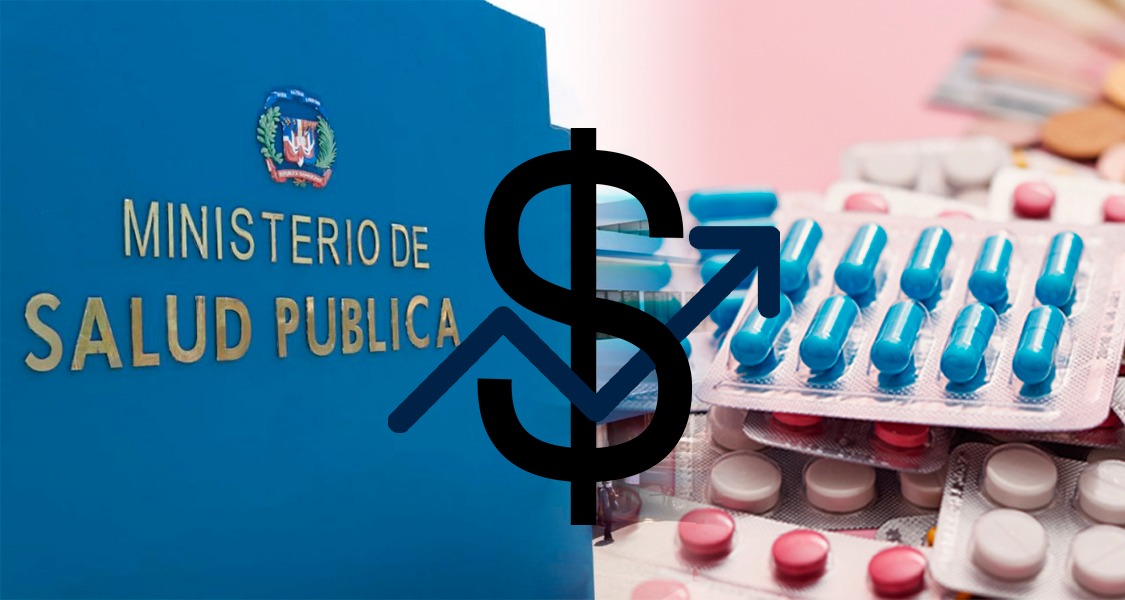Dr. Santo Domingo –The Ministry of Public Health’s high-priced drug program has come under heavy criticism from politicians, the media and the public in recent months over delivery delays, bureaucracy and hurdles in procurement and hiring laws.
Chronic diseases such as growth disorders, cancer, rheumatoid arthritis, systemic lupus erythematosus, kidney disease are some of the more than one hundred conditions covered by the plan.
Public Procurement and Contracts Director Carlos Pimentel has drawn attention in recent days with statements to the media in which he said the social policy was “unsustainable for the government”. It was later clarified that this was a call to the Health Risk Regulatory Agency (ARS) to cover more high-cost drugs.
Currently, the high-cost drug program has an annual budget of P8 billion to guarantee free treatment for a limited number of patients with chronic diseases.
According to a recent press release from the Ministry of Public Health, 1,300 new patients have been admitted this year and timely treatment has been provided to more than 16,000 beneficiaries.
For its part, the Essential Medicines Program (PROMESE/CAL) manages a P7.3 billion budget for the purchase of these medicines.
As part of the program, they recently executed two procurement processes for high-cost Medicines Access Authority (DAMAC)-needed drugs to meet demand from May to November of this year.
During these two procurements, 75 molecules were procured for which a budget of 3,406,760,728 million pesos was allocated.
There are more than 100 chronic diseases that require expensive medications.
Within pathology, the greatest need is in different types of cancer, which account for 41% of the chronic conditions covered by the program.
Major diseases include: Tongue, prostate, colon, lung, rectum, papillary, head and neck, tonsils, cervix, pharynx, breast, ovary, pancreas, kidney; and thyroid. Idiopathic arthritis, psoriasis, rheumatoid arthritis. Endometriosis, Behcet’s disease, hepatitis C, hidradenitis suppurativa, arterial hypertension, pulmonary hypertension, and renal failure.
The Public Health High-Cost Drug Program currently has a catalog of 106 available drugs, including:
Abiraterone Acetate, Abiraterone Acetate, Goserelin Acetate, Goserelin Acetate, Extended Release Implants, Leuprolide Acetate. Zoledronic acid, zoledronic acid adalimumab, agalsidase beta, atezolizumab, azacitidine, basiliximab, bevacizumab, bevacizumab; among others.
The National Council of Social Security (CNSS) is the management and parent body of the Dominican social security system and is responsible for guaranteeing social security. Affiliates’ Social Security coverage for critical illnesses and high-priced drugs.
As explained in Resolution 553-02 on the expansion and harmonization of coverage of medicines and high-cost procedures. As of September 2022, CNSS approved a budget of 1,000,000.00 RD$2,090,000.00 pesos as the coverage limit per member. These include a range of diseases that require high-cost treatment and are currently covered by the ARS.
The CNSS covers a total of 89 high-cost drugs used to treat adult and childhood cancer, neoadjuvant, adjuvant and palliative care.
drug
Abiraterone, megestrol acetate, folinic acid; ibandronic acid, zoledronic acid, albumin + paclitaxel, anastrozole, aprepitant; azathioprine, basiliximab. Bendamustine, bevacizumab, bicalutamide, bleomycin, bortezomib; busulfan, capecitabine, carboplatin, cetuximab, cyclophosphamide; off market In addition to other higher-cost products.

